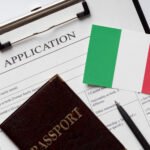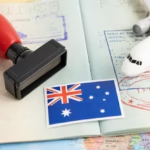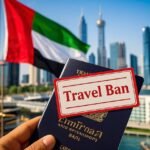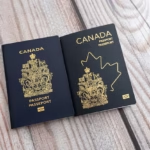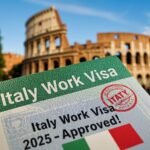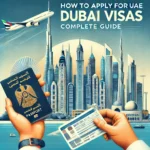For Italy work Visas for Non EU Nationals
Italy’s government has just launched a major immigration-driven strategy to address severe labour shortages by offering 497,550 work visas to nItaly work visas for non EU nationals from 2026 to 2028. Designed to bolster sectors like agriculture, tourism, healthcare, and construction, this three-year Decreto Flussi program is a game-changer for global job seekers exploring career opportunities in Italy. In this blog, you’ll discover:
- The yearly visa quotas and timeline 📅
- Targeted industries and in-demand roles
- Step-by-step application guidelines
- Eligibility criteria & required documents
- Costs, processing times & helpful resources
- Strategic tips to maximize your chances
Everything you need to get started—and secure a legal Italian work permit.
What Are the New Visa Quotas?
On June 30, 2025, Italy’s Cabinet approved the “Decreto Flussi” 2026–2028, granting 497,550 work visas to non‑EU nationals 1. The breakdown:
- 164,850 visas in 2026
- Remainder split across 2027 and 2028, reaching nearly 500,000 total by end‑2028 businesstoday.in.
This marks the second major expansion of legal migration pathways in under three years, following 450,000+ permits granted between 2023–2025
Why Italy Is Expanding Visas
Several pressing factors drive this move:
- Demographic crisis: In 2024, Italy recorded 281,000 more deaths than births, reducing its population by 37,000.
- Aging workforce & low birth rate strain the labour market, pushing for immigration to sustain economic output.
- Economic demand: Employers from agriculture to construction voiced strong needs for workers; quotas reflect those sector-specific requests.
Breakdown of Italy’s 497,550 Work Visas (2025 Quotas)
| Job Sector | Number of Visas | Key Professions |
|---|---|---|
| Agriculture | 89,700 | Farmworkers, harvesters |
| Tourism & Hospitality | 122,300 | Chefs, hotel staff, waiters |
| Construction & Logistics | 85,000 | Truck drivers, masons, welders |
| Healthcare | 44,600 | Nurses, caregivers, doctors |
| Tech & Engineering | 31,450 | Software developers, IT specialists |
| Other Skilled Jobs | 124,500 | Mechanics, electricians, plumbers |
Note:
- Seasonal workers (up to 9 months) can apply under separate quotas.
- Self-employed and freelancers have a separate application process.
Top Jobs for Non EU Workers
A. Healthcare Sector (44,600 Visas)
✅ Nurses – Average salary: €25,000–€35,000/year
✅ Elderly Caregivers – €18,000–€25,000/year
✅ Doctors (specialists needed in rural areas) – €50,000+
Requirements:
- Recognized medical degree
- Italian language (B1 level for nurses)
B. Tech & IT (31,450 Visas)
✅ Software Developers – €35,000–€60,000/year
✅ Data Scientists – €40,000–€70,000/year
✅ Cybersecurity Experts – €45,000–€75,000/year
Requirements:
- Degree or 3+ years of experience
- No Italian required for multinational companies
C. Tourism & Hospitality (122,300 Visas)
✅ Chefs & Cooks – €20,000–€35,000/year
✅ Hotel Managers – €25,000–€40,000/year
✅ Tour Guides (English/German speakers) – €18,000–€30,000/year
Requirements:
- Vocational training or experience
- Basic Italian (A2 level)
Salary Requirements for Work Visas
| Visa Type | Minimum Salary (2025) |
|---|---|
| Skilled Worker Visa | €25,000/year |
| Highly Qualified Worker (EU Blue Card) | €35,000/year |
| Seasonal Worker Visa | €9,000 for 6 months |
Note: Salaries must meet collective bargaining agreements for each sector.
Required Documents
Typical documentation includes:
- Valid passport
- Signed job offer and employer permit
- Proof of qualifications/training
- Health insurance coverage
- Proof of accommodation (lease agreement)
- Financial solvency proof
- Consular visa application form & fees
- Biometric data submitted via in-person appointment
Eligibility & Application Process
Italy’s work visa application relies on the Decreto Flussi mechanism:
- Employer Application: Italian employers initiate requests during Click Day, the designated intake window.
- Quota Allocation: Applications processed on a first-come, first-served basis within allocated quotas .
- Consular Procedures: Once approved, non‑EU nationals apply for work visas at Italian consulates, presenting job offer, employer permit, validated passport, and health insurance.
- Permesso di Soggiorno: Upon arrival in Italy, applicants apply for a residence permit within 8 days
Visa Application Process
Find a Job Offer
- Use Italian job portals:
Employer Applies for “Nulla Osta” (Work Authorization)
- Employer submits request to the Immigration Desk (Sportello Unico).
- Processing time: 30–60 days.
Apply for Work Visa at Italian Embassy
- Submit:
- Passport
- Job contract
- Nulla Osta approval
- Proof of accommodation
Enter Italy & Get Residence Permit
- Apply for a Permesso di Soggiorno within 8 days of arrival.
How to Avoid Visa Rejection
❌ Incomplete documents → Double-check embassy checklist.
❌ Low salary offer → Ensure it meets minimum requirements.
❌ No Italian language (for healthcare/hospitality jobs) → Take a basic course.
FAQs About Italy work Visas for Non EU Nationals
1. Can I bring my family?
Yes, spouses/children can apply for family reunification visas.
2. Is there an age limit?
No, but employers may prefer candidates under 50 for physical jobs.
3. Do I need to speak Italian?
Only for healthcare, tourism, and customer service roles.
4. Can I switch jobs?
Yes, but the new employer must reapply for Nulla Osta.
5. How long is the visa valid?
1–2 years (renewable, PR after 5 years).
Conclusion
Italy’s 2025 work visa quotas present a golden opportunity for non-EU workers.
Next Steps:
- Check if your job is in demand (see sector quotas above).
- Apply for jobs on Italian portals.
- Prepare documents (degree attestation, language certificates).
Official Resources:
Got questions? Drop them in the comments or reach out via our contact page!
Written by Asif, an experienced researcher helping People’s to navigate visas and work abroad opportunities.
Explore more visa guides on LiveAbroadGuide.com
Read Our Latest Blog About: Seasonal Jobs in Europe for Non-EU Citizens – Apply for Summer 2025

